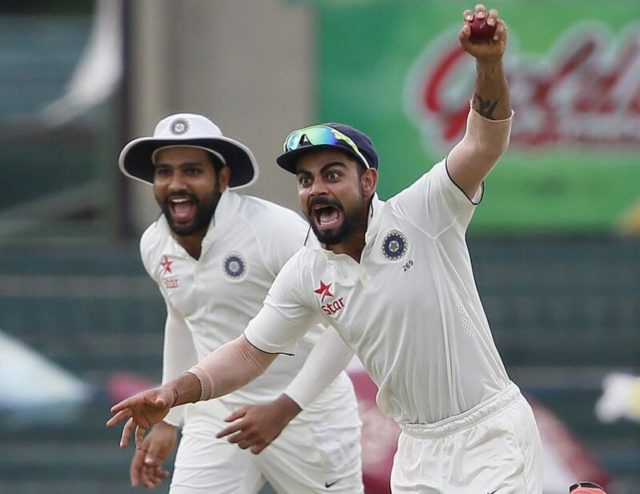Rohit Sharma sustained the injury in a net session in Mumbai where the Indian squad has been training ahead of the three-match Test series against the Proteas.
JOHANNESBURG – India was dealt a massive blow just days before the team departure for South Africa, with vice-captain, Rohit Sharma ruled out of the Test series because of a hamstring injury.
ALSO READ: History beckons for motivated India
Sharma, 34, sustained the injury in a net session in Mumbai on Sunday where the Indian squad has been training ahead of the three-match Test series that starts in Centurion on Boxing Day.
Sharma’s place in the squad will be taken by Priyank Panchal, who captained India A in the recent series with South Africa A.
Sharma is the second highest run-scorer in Tests this year, with his 906 runs coming at an average of 47.68. He’s taken to the opening position with aplomb, since being selected there two years ago, making five centuries including a career best 212 against South Africa in 2019.
Panchal made scores of 96, 14 and 0 against SA A in Bloemfontein. The 31-year-old has not played international cricket, but he is an experienced campaigner with 100 first class matches under his belt in which he averages 45.52 and has scored 24 centuries.
The Indian team will arrive on Friday, with the Proteas getting together at their hotel the following day.
More details here – https://t.co/XXH3H8MXuM#TeamIndia #SAvIND https://t.co/jppnewzVpG
— BCCI (@BCCI) December 13, 2021
The challenges are significant for both sides, given the pandemic and demands of the bio-secure environments. For South Africa there’s already been the major blow, of Quinton de Kock missing at least one Test in the series because of his wife Sasha giving birth to the couple’s first child.
In non-pandemic times, De Kock could have been at the birth, and then returned to the side, but because ‘bio bubble’ management requires a period of isolation before people ‘enter the bubble,’ there won’t be enough time for De Kock to come back for the final Test in Cape Town.
There is a chance he may miss the second Test starting on January 3 at the Wanderers as well, opening up the possibility that Kyle Verreynne, the most talked about player in South African cricket last season, will play a significant role in the biggest series South Africa has played since the pandemic started.
The Indians will stay in the same hotel as the Sri Lankans and Pakistani players did last season – the Irene Country Lodge – which, as both of those teams can attest, provides a more ‘outdoorsy’ feel to the ‘bubble’ experience. With a large dam, bikeways and walkways, the players don’t have to be confined to hotel rooms as was the case in Australia and England.
Managing those protocols will be an unseen element which will be crucial to the outcome of the series. South Africa head into the first Test at SuperSport Park on December 26, with little Test cricket behind them in the last year.
In the same period in which India has played 15 Tests, South Africa has played just six, the last of those in June. India will have had three weeks between Tests, when the first ball is bowled on Boxing Day.
More details on #SAvIND tour here – https://t.co/zPwreJoFkT#TeamIndia
— BCCI (@BCCI) December 8, 2021
It almost negates the Proteas’s home ground advantage. India are Test ready, South Africa aren’t and it will be a significant hurdle for the hosts to overcome, even at one of their favourite venues, where they’ve lost just twice in 26 matches, with one of those defeats decided by the need for a leather jacket.
The second Test takes place at the Wanderers, where India have never lost – a strange statistical anomaly given India’s supposed weakness against fast bowling – while Newlands, which could host a decider could also be the scene of Virat Kohli’s 100th Test.
@shockerhess








